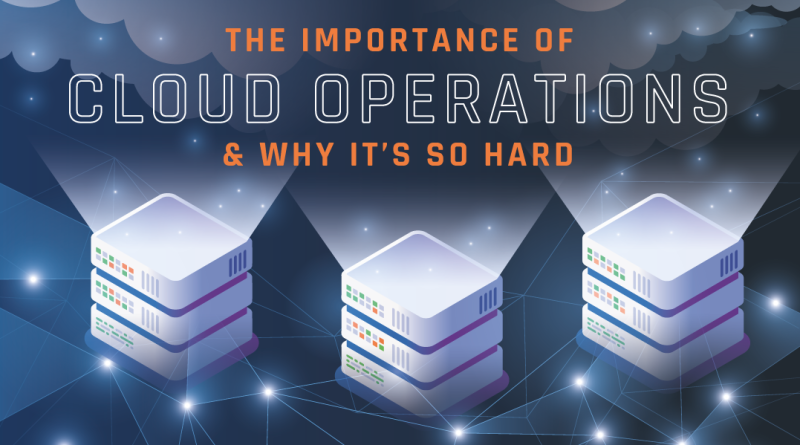Cloud Monitoring: Are You Secure?
The complexity of the modern age serves as a double-edged sword and, as complexity grows, both the benefits and challenges of technology steepen.
Modern innovations such as cloud infrastructure enable people to do even more, but it also raises the minimum skill required to utilize this technology.
This is why it’s paramount for innovations to focus on not only efficacy, but also efficiency and usability.
In recent times, everything is being virtualized and connected to the cloud. 94% of enterprises already utilize the cloud and that number is likely to go up as more and more utility is built into it.
But how accessible are cloud processes?
Presently, the cloud operations market is led by Amazon with “Amazon Web Services” with an estimated 34% market share.
The second and third largest providers are Microsoft’s “Azure” and Google’s “Google Cloud” comprising 22% and 9.5% of market share respectively.
While the first mover advantage is prevalent for providers, the widespread usage of cloud services has been documented as well.
There is 1 exabyte, or over 1 billion gigabytes, of data already in the cloud.
Alternatively, this amount of data would require around 50,000 trees with the traditional pen-and-paper method of storing data.
For aggregate quantities of data, like the amount used commercially, the cloud provides more cost- and time-efficient methods of both storing and retrieving data.
The issue is when growing complexity intermingles with growing accessibility.
A Deeper Look at Your Cloud Operations
Around 4 in every 5 organizations report poor visibility in their cloud operations.
This happens for a variety of reasons ranging from ineffective tools to data being overly spread out.
Most notably, cloud tools are meant for development and security rather than troubleshooting and the plethora of services used provide a single metric each.
Consequently, it’s hard to gather the data relating to a problem and it’s even harder to actually identify a problem.
The measurable downsides include 330% increase in related incidents and 74% of companies reverting to physical alternatives to cloud operations.
Other smaller effects include more frequent outages, poorer application performance, and various delays in troubleshooting.
Network operators, or NetOps, often struggle to combat the inefficacy provided by most cloud operations.
But solutions have begun to arise and cloud monitoring services have become the most popular amongst them.
Introducing Cloud Monitoring Services
The implementation of cloud monitoring services shows a reduced security risk, lower mean time to resolution, and increased perceived business value.
Cloud monitoring helps to mitigate issues of poor visibility by consolidating the previously scattered metrics.
By centralizing this data, not only does it eliminate the need to accumulate data, but it also expedites the problem-assessment process.
As a result, the mean time to resolution (MTTR) mentioned above is reduced by a noticeable margin.
Conversely, cloud monitoring goes beyond mere function and aids with perception.
A business that implements cloud monitoring is more easily comprehensible, which makes a business appear more valuable.
While this seems more speculative, this notion is almost universally agreed upon across physical, virtual, and hybrid environments.
Finally, a more efficient and effective system means there is less room for error and more resources to allocate to security.
As discussed, cloud monitoring can save both time and effort by compiling data and making analysis easier.
However, with the improved cloud monitoring tools, your company is less susceptible to security risks and data breaches.
The improved tools enable real-time troubleshooting, allowing NetOps to solve problems before program and update deployment.
By reviewing and fixing programs before deployment, you significantly reduce the chance of security breaches and other issues.
In Conclusion
Ultimately, the modern age of technology is about optimization and increasing efficacy.
Just like the cloud can be a major improvement on pen-and-paper, cloud monitoring services are currently an improvement on the cloud.
You can vastly improve the experience for network operators, which, in turn, improves the health and longevity of the applications.
Cloud monitoring services go even beyond the traditional benefits and all integration of third-party services for even greater ease of use.
With the ever-evolving nature of both the cloud and cloud monitoring services, businesses without one are sure to be behind the curve.
Those who are able to get ahead with technology can get ahead of their competition.
Source: Live Action
